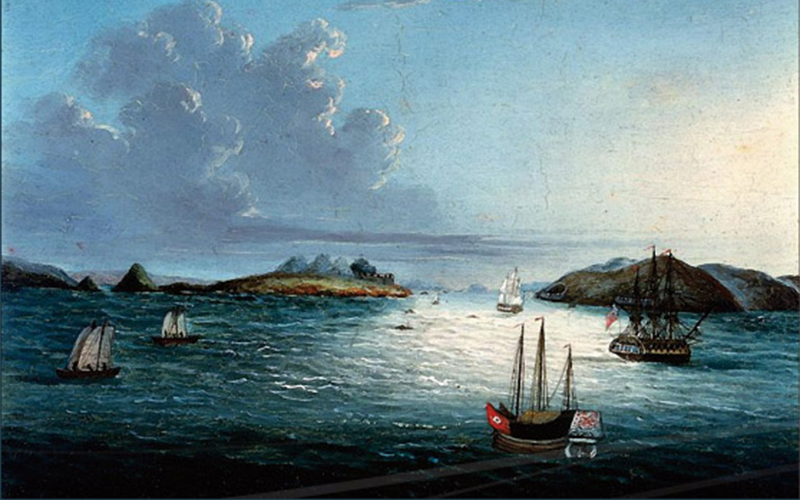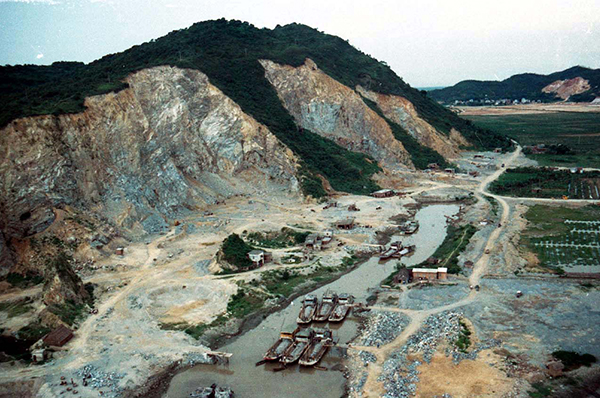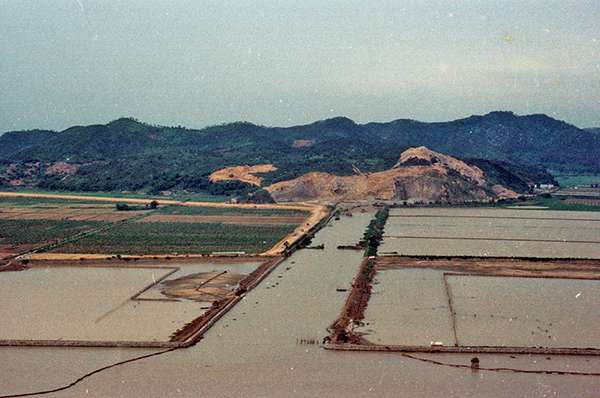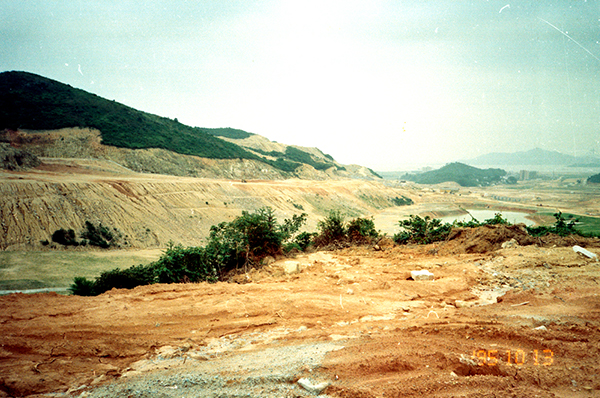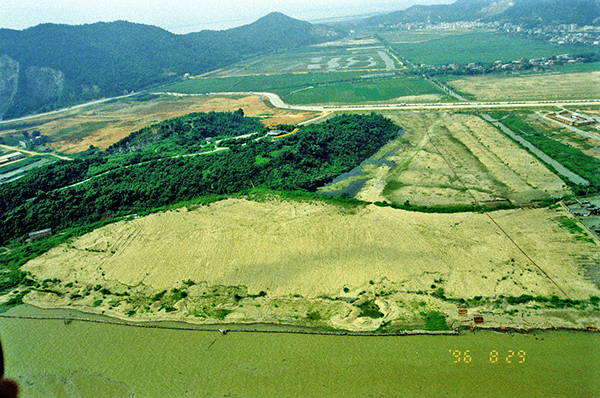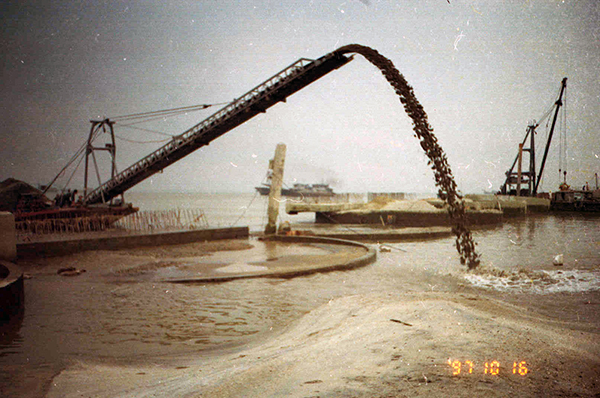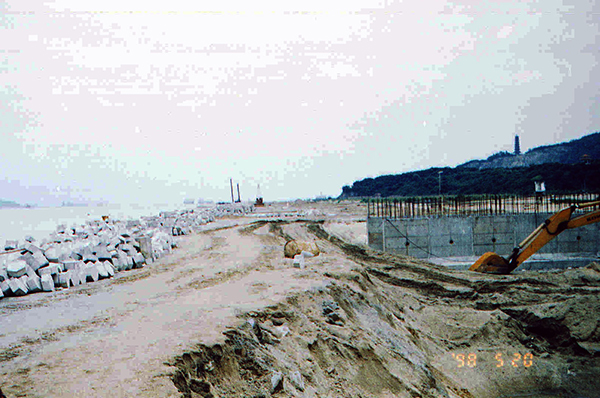NANSHA & NANSHA BAY
+ 查看更多
Nansha: A coastal defense fortress, a treasure of the South China Sea+ 查看更多
Nansha: A coastal defense fortress, a treasure of the South China Sea
+ 查看更多
The Humen Waterway, where Nansha is located, is a famous military seaport in the modern Chinese history. In the middle of the 19th century, it was the main battlefield of the Opium War. Many fort sites have been left behind along the coast, witnessing the glorious history of the Chinese nation's indomitable resistance against foreign aggression.
Nansha Bay: Time flies, things move on, we have bright prospects+ 查看更多
Nansha Bay: Time flies, things move on, we have bright prospects
+ 查看更多
Coming to modern times, Nansha Bay, the closest area to the Humen Waterway in Nansha District, is still a remote and quiet small fishing village. Since the end of the 1980s, Fok Ying Tung Group and the local government have invested in the construction of Nansha Bay: reclamation, bridge, road, and dock construction... They have made great efforts to build a solid foundation for the economic development of Nansha Bay. At present, the regional development trend is very good, and the prospects of Nansha Bay are shining brightly.
地方的历史与文化
地方的历史与文化
场地的肌理和自然现状
场地的肌理和自然现状
场地的肌理和自然现状
场地的肌理和自然现状
您可以双击这里或者点击编辑按钮来修改内容您还可以添加图标,按钮,图片等常用元素。您可以双击这里或者点击编辑按钮来修改内容您还可以添加图标按钮图片等常用元素您可以双击这里或者点击编辑按钮来修改内容您还可以添元
您可以双击这里或者点击编辑按钮来修改内容您还可以添加图标,按钮,图片等常用元素。
您可以双击这里或者点击编辑按钮来修改内容您还可以添加图标,按钮,图片等常用元素。您可以双击这里或者点击编辑按钮来修改内容您还可以添加图标按钮图片等常用元素您可以双击这里或者点击编辑按钮来修改内容您还可以添元
您可以双击这里或者点击编辑按钮来修改内容您还可以添加图标,按钮,图片等常用元素。
您可以双击这里或者点击编辑按钮来修改内容您还可以添加图标,按钮,图片等常用元素。您可以双击这里或者点击编辑按钮来修改内容您还可以添加图标按钮图片等常用元素您可以双击这里或者点击编辑按钮来修改内容您还可以添元
您可以双击这里或者点击编辑按钮来修改内容您还可以添加图标,按钮,图片等常用元素。
0 |
建筑设计奖项
0 |
建筑设计奖项
0 |
建筑设计奖项
0 |
建筑设计奖项
The Twenty-year development of Nansha Bay
+ 查看更多
- 1987Dr. Fok Ying Tung visited Nansha and put forward a preliminary idea for the development of Nansha.
- 1991The Humen Automobile Ferry Terminal is open to navigation, and the traffic between the east and west sides of the Pearl River has been shortened by 1.5 hours.
- 1993Nansha was approved by the State Council as a national economic development zone.
- 1996The construction of the world's largest Tian Hou Temple was completed. The construction of the Water Town cultural streetin the Puzhou Garden was completed and opened to the public. The Front Port Avenue was completed and opened to traffic.
- 1997Nansha Golf Club opened to public.
- 1998The construction of the Humen Bridge was completed and opened to public traffic.
- 1999The Nansha Convention and Exhibition Center and Nansha Science Museum opened to public. The construction of the Puzhou Garden was completed.
- 2004The Nansha Grand Hotel opened to public. The construction of the Nansha Yingtung Middle School was completed and officially enrolled students.
- 2005The State Council approved the establishment of Nansha District, Guangzhou City. The construction of the Nansha Chinese Chamber of Commerce Building was completed. The construction of the Nansha World Trade Center Building was completed.
- 2008The Guangzhou Nansha Bonded Port Area was established with the approval of the State Council.
- 2009The Nansha Passenger Port officially opened Hong Kong International Airport routes.
- 2010The Nansha Passenger Port officially opened the Macau route, and the voyage otakes 80 minutes to reach the Macau Offshore Terminal.
- 2011The construction of the Nansha Marina was completed. The Fok Ying Tung Research Institute Building of the Hong Kong University of Science and Technology was completed and capped.
- 2012The total surface of the Nansha's administrative area has expanded to 803 square kilometers, and it has officially become the unique national-level newly-developed area in South China.
- 2015China (Guangdong) Pilot Free Trade Zone Guangzhou Nansha Newly-developed Area was officially listed.
- 2016Nansha is designated as the unique city sub-center of Guangzhou.
- 2017The southern extension of the Metro Line 4 to Nansha Passenger Transport Port Station opened.
- 2019The Nansha Bridge was officially opened to traffic and the home port of Guangzhou Nansha International Cruise opened for trial operation.
Historical Moment of Nansha
+ 查看更多


